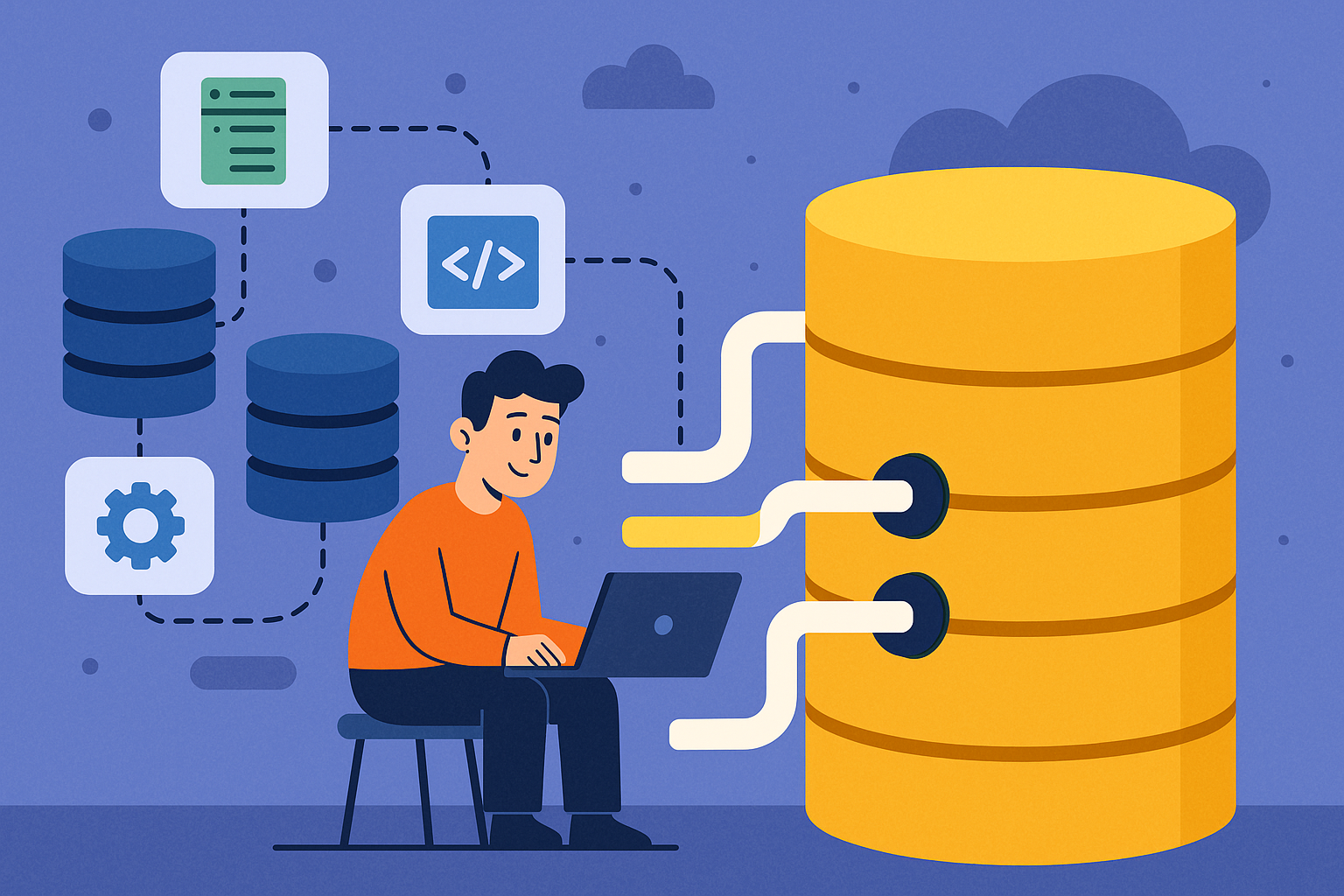When it comes to data integration, Extract, Transform, Load (ETL) is a time-tested paradigm that has found its place in numerous applications. From populating data warehouses to enabling real-time analytics, ETL processes have primarily dealt with structured or, at most, semi-structured data. But what happens when we delve into the realm of unstructured data—a growing treasure trove in the modern data landscape?
The importance of unstructured data is escalating across industries. From social media interactions and customer reviews to sensor outputs and multimedia, unstructured data encompasses a wide variety of formats and representations. So how can ETL paradigms adapt to the challenges posed by unstructured data? That is the question we're going to unravel in today's exploration.
The Anatomy of Unstructured Data
In the context of data architectures, the term "unstructured data" can sometimes be misleading. The data itself often has some structure or inherent organization, but it does not conform to traditional database models like relational or columnar databases. This type of data is characterized by its lack of a fixed schema, making it challenging to manipulate using standard SQL queries or traditional database management systems.
Textual Data
When we think of unstructured data, textual information is usually what comes to mind first. This category includes a broad range of data types—from emails and social media posts to customer reviews and web page content. Each of these sub-categories can vary in complexity. For instance, an email can include metadata like sender, receiver, date, and time, along with the actual text and possible attachments.
Multimedia Data
Beyond textual data, unstructured data also encapsulates a range of multimedia formats, such as images, audio, and video files. Each of these data types requires specialized processing techniques. An audio clip, for example, could be a simple sound byte or a more complex musical composition with multiple tracks and frequencies.
Sensor Data
Increasingly, sensor-generated data from the Internet of Things (IoT) is becoming a significant part of the unstructured data landscape. Whether it's telemetry data from connected vehicles or environmental sensor outputs, this data is often streaming in real-time and can be highly unstructured.
Complex File Types
Unstructured data also covers more complex file types like PDFs, which might contain a mix of text, images, and even embedded metadata. Similarly, Word documents or PowerPoint presentations are examples of complex files that contain multiple types of data.
Challenges in ETL for Unstructured Data
With structured data, the pathways are often clear: you extract from a specific database, perform transformations as defined by your data schema, and load it into a data warehouse or a similar repository. The process becomes convoluted with unstructured data.
Firstly, the lack of a rigid schema means that identifying what to extract is not straightforward. Formats are inconsistent, data sizes vary significantly, and most importantly, the semantics of the data can differ wildly.
Secondly, when it comes to transformation, the challenges multiply. While structured data can often be transformed through straightforward SQL queries, unstructured data may require far more complex operations, ranging from text analytics to audio signal processing.
Lastly, the loading phase is fraught with its own issues, including considerations around storage costs, data integrity, and future query performance. In sum, each phase—Extraction, Transformation, and Loading—poses unique challenges when dealing with unstructured data.
Extraction Techniques for Unstructured Data
Given the complexities involved, it's unsurprising that traditional extraction methods, usually suited for structured databases, often fall short when applied to unstructured data. Let's explore some of the advanced techniques to facilitate the extraction phase in the ETL process for unstructured data.
Web Scraping
Web scraping is one of the most commonly used methods for extracting text-based unstructured data. Whether you're pulling content from news articles or scraping customer reviews, specialized libraries and tools are available that can simulate web navigation and scrape data. However, this method has limitations, especially concerning the scale and rate at which data can be extracted.
API Calls
When the data resides on platforms that offer programmatic access, Application Programming Interfaces (APIs) are the go-to method for extraction. APIs offer a cleaner, more reliable means of accessing data compared to web scraping. For example, social media platforms usually provide APIs that allow users to extract a variety of data types, including textual posts, images, and even video content.
Stream Processing
For real-time or near-real-time needs, stream processing becomes crucial. In scenarios such as IoT sensor data, where the volume of data is enormous, and the rate of data flow is rapid, streaming data platforms can capture and temporarily store the data for further processing. This approach is often used in industrial automation, connected cars, and smart home systems.
File Listeners
For more static types of unstructured data, like documents stored on a file system, file listener services can be employed. These services monitor specified directories for new files or changes to existing files, triggering the extraction process when an event is detected.
Data Governance Considerations
Regardless of the extraction technique employed, it's imperative to consider data governance policies. When extracting data that may contain sensitive or personally identifiable information, it's crucial to follow relevant regulations and compliance standards, such as GDPR for European data or HIPAA for healthcare information in the United States.
The techniques employed in the extraction phase must be aligned with the type and nature of the unstructured data in question. With the right approach, the complexities involved can be effectively managed, laying a solid foundation for the subsequent transformation and loading phases of the ETL process.
Transformation of Unstructured Data
"Data transformation in this realm is as much an art as it is science," said D.J. Patil, former U.S. Chief Data Scientist. Indeed, transforming unstructured data often requires a multi-disciplinary approach. Text-based data might necessitate Natural Language Processing (NLP) techniques for sentiment analysis or keyword extraction. Multimedia data, such as images and audio, may require signal processing techniques to convert them into a structured format or to extract relevant features.
Another interesting area is the use of machine learning models, specifically trained to understand certain types of unstructured data. These models can categorize data, extract features, and even convert unstructured data into a structured form, thereby making it easier to integrate into existing databases or analytics platforms.
Loading Strategies for Unstructured Data
The last mile in our ETL journey involves getting this newly structured (or semi-structured) data into a form and place where it can be queried and analyzed. Data lakes are often the repository of choice, given their capability to store large volumes of data in various formats. However, considerations around data governance, security, and compliance can't be overlooked.
Moreover, depending on the expected use-cases, you may choose to load the data into specialized databases or analytics platforms optimized for specific types of queries. Here, the trade-offs between scalability, data integrity, and query performance come to the fore. This becomes especially relevant when integrating unstructured data with existing structured data sources for cross-domain analytics.
Tools and Technologies
The landscape of tools and technologies for handling ETL processes for unstructured data is both vast and evolving. As organizations recognize the need to integrate unstructured data into their analytics workflows, software solutions are emerging to meet this specific requirement. Unlike traditional ETL tools that were primarily designed for structured data, newer solutions are increasingly sophisticated, capable of handling a variety of data formats and employing machine learning algorithms for advanced transformations.
Some tools bring the power of parallel processing to the table. Given the large volume of unstructured data, parallel processing enables more efficient and quicker data transformations. This is particularly crucial for organizations that require real-time or near-real-time analytics.
Integration with machine learning platforms is another notable feature in modern ETL tools. These integrations not only assist in the transformation phase but can also provide predictive analytics, enabling businesses to derive actionable insights from their unstructured data.
Data lineage and governance features are increasingly becoming standard, offering traceability and ensuring compliance with various data protection regulations. These aspects become all the more critical when dealing with unstructured data, which often contains sensitive or personally identifiable information.
While the choice of the right tool may depend on multiple factors, such as scale, data types, and specific use-cases, one thing is clear: the tool you choose should be agile enough to adapt to the rapidly evolving landscape of unstructured data.
Best Practices and Key Considerations
Navigating the world of ETL for unstructured data is undoubtedly complex, but a set of best practices can serve as guiding principles.
Firstly, consider adopting an iterative approach to your ETL processes. Unlike structured data where the ETL pipeline is often fixed, unstructured data requires more frequent adjustments. You might discover, for example, that a new type of unstructured data requires a new transformation technique. An iterative approach allows for incremental improvements and fine-tuning.
Secondly, involve multiple stakeholders in the process. The complexity of handling unstructured data often necessitates a multi-disciplinary approach. For instance, textual data may require input from linguists familiar with NLP, while image data may require expertise in machine vision. Collaboration across departments can yield a more holistic ETL process.
Furthermore, invest time in data governance from the outset. Unstructured data often resides in multiple locations and can be of varying quality. Establishing strong data governance practices will not only ensure data quality but also help in maintaining compliance with data protection regulations.
Also, it's crucial to document your ETL processes meticulously. Given the complexity involved, comprehensive documentation serves as a vital resource for troubleshooting, audits, and future iterations of your ETL pipeline.
Lastly, keep an eye on emerging technologies and standards. The field of ETL for unstructured data is far from static. New methods for data tagging, metadata standards, and transformation algorithms are continually being developed. Staying abreast of these developments can provide you with new tools and techniques to improve your ETL processes.
Unveiling the Future of ETL-Data warehousing landscape
Unstructured data, despite its challenges, offers unparalleled insights and opportunities for businesses willing to navigate its complexities. By adapting ETL methodologies to suit unstructured data, organizations can unlock a wealth of information that goes beyond traditional data analytics.
The realm of ETL for unstructured data is indeed complex but equally rewarding for those willing to explore it. The growing array of tools and techniques is making it increasingly feasible to bring structure to the unstructured, thereby offering a pathway to more comprehensive, cross-domain analytics.
 is now
is now


